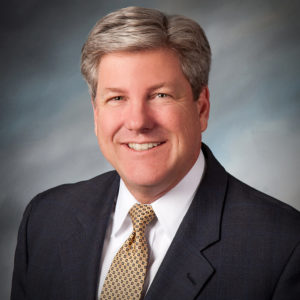By Knut A. Rostad
Originally posted on ThinkAdvisor, August 22, 2017
The Certified Financial Planner Board of Standards’ comment period on its proposed standards ended yesterday at a historic time not unlike 1940. The Dodd-Frank Act was enacted seven years ago on the heels of the financial crisis. Rutgers law professor Arthur Laby writes that while the Securities Act of 1933 and Exchange Act of 1934 responded to immediate crises, seven years later, the Advisers Act of 1940 resulted from “study and reflection.”
Today, seven years after Dodd-Frank, the CFP Board promulgates standards in a similar post financial crisis environment. Distrust of Wall Street lingers. The American Enterprise Institute, a conservative think tank, concluded in 2013 that most investors believe the street “operates by a foreign code of conduct.”
This forces the question: What do investors want from advisors’ code of conduct? A survey conducted in 2016 by the CFA Institute offers an insight. Transparency and clarity on fees and conflicts stand out above most other concerns, even “beating” the benchmarks’ performance. One reading of this research: Meeting client needs today has actually gotten easier.
The proposed standards move financial planners towards professionalism on a number of fronts. Two stand out. One, in a sharp departure from the current standards, all CFPs who render financial advice are held to fiduciary standards of conduct. Two, conflicts begin to be addressed. Still, more steps need be taken in three areas especially: conflicts, cost disclosures and enforcement.
Conflicts.
CFP Board standards call for disclosure and management of conflicts. This is insufficient. CFPs need guidance. Guidance that acknowledges the importance of conflicts and the present absence of education and understanding of their inherent harms. Like a threatening virus (a term offered by a former SEC official), conflicts should be defined as presumed harmful, deserving of being avoided or eliminated. However, if a conflict is accepted by a broker or advisor and is not avoided, then what?
There is only one answer. It’s mitigation that neutralizes the virus. Mitigation measures and remedies proportional to the risks and harms. CFP Board should provide guidance because the BD industry and the vast majority of CFPs and their firms have no record, experience or culture of mitigating conflicts.
What’s It Cost?
The standards call for describing how clients pay and how CFPs and firms are paid — not what is paid. This requirement falls short. CFPs should be mindful of how low is this standard. Consider there may be no other product sale or equivalent service rendered that operates in so much darkness that is so fervently defended and so routinely associated with poor outcomes. Disclosure of what the client pays in all-in costs and fees should be required in writing. At minimum, provide a good-faith written estimate.
Enforcement.
Enforcement is crucial, especially in an age of skepticism. Michael Kitces asks how the standards can be enforced with resource constraints and the ambiguity in the standards. And what about the added factor of BDs’ own policies? One CFP writes that her broker-dealer, UBS, notified customers that CFP standards do not “change the obligation of UBS or financial advisors.”
Without credible enforcement it’s the honor system. Numerous provisions can be adopted to provide enforcement that enhance compliance without the resources of conventional regulatory enforcement. One such provision: have CFPs affirm their adherence to CFP Board standards on their Form ADV.
Not Practical?
Some will view these measures — treating conflicts as serious harms, disclosing complete costs and adopting credible enforcement measures — as too ambitious for CFPs. Some will say they’re impractical “in the real world.” The CFP Board should hold focus groups of ordinary investors to get their views on “what’s not practical.”
Efforts to make shortcuts around standards are not new. They are as old as standards themselves. This is why the words of former SEC Commissioner Luis Aguilar (2008-2015) should be recalled. Aguilar spoke in 2010 on why weakening fiduciary duties was not an option and that there is no such thing as a “partial” fiduciary.
“The fiduciary standard has served advisory clients well for many years, and I believe that it should be the governing standard whenever investment advice is provided. If you are giving advice to an investor, regardless of the title on the business card, you should always be bound to do so in the best interests of the client. While the scope of service may vary between clients, the standards of loyalty and care in providing that service should not. You simply cannot be three-quarters of a fiduciary.”
Commissioner Aguilar raises a point not much heard in public. Professionals don’t get to choose which parts of their standards to meet. There are no partial credits. It’s all or nothing, pass or fail. As Aguilar states, one cannot be a “three-quarters of a fiduciary.”
This year could well become another 1940 for advice. That year, industry leaders chose to push back the excesses of a prior decade and to clearly differentiate advice from sales. The CFP Board is at the helm today and much is at stake. Let’s hope history repeats itself.

